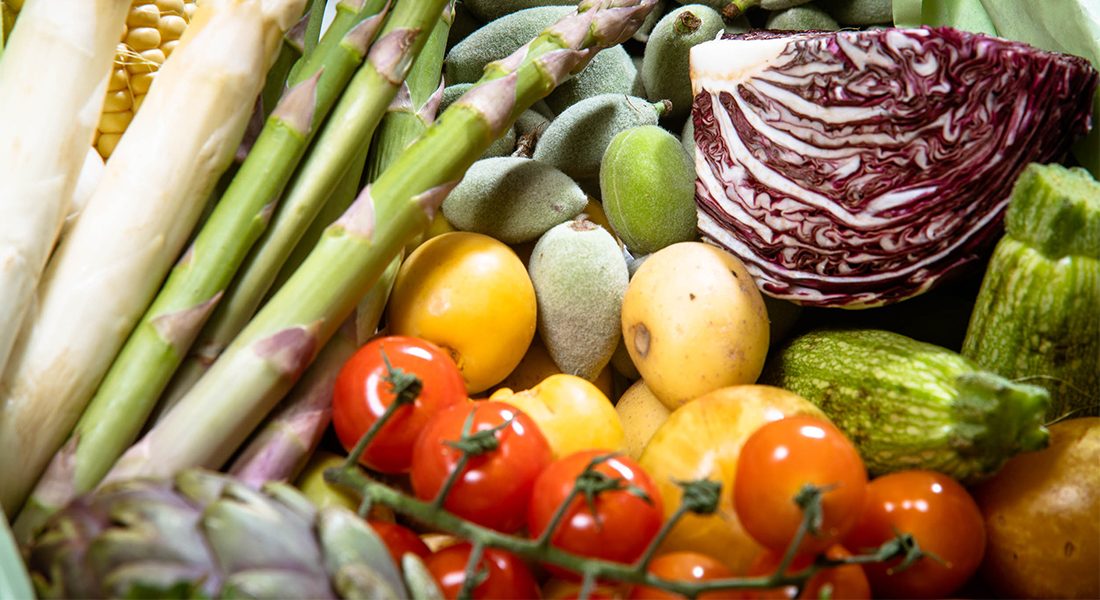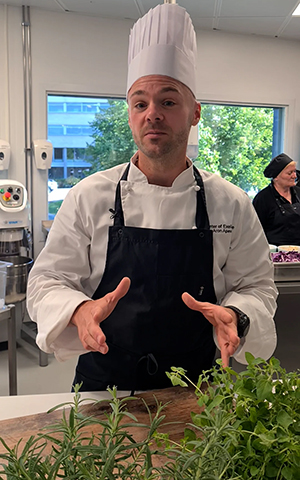AI helps us reducing food waste
New and creative uses for AI are constantly emerging, and now artificial intelligence has also made its way into our restaurants as we are trialling healthy, AI-generated recipes with selected customers. We believe that AI can play a key role in creating a world without food waste.

Anyone who has struggled to use up ingredients in the fridge and freezer can now use a new method to minimise waste. AI can help you suggest healthy and sustainable meals based on the ingredients in your pantry, and this is exactly what is currently being trialled in restaurants operated by Coor in Norway.
"AI technology has enabled us to create recipes based on available ingredients. This not only saves us valuable time and resources, but also gives us creative and innovative ways to utilise surplus ingredients to create amazing culinary experiences," Aaron Apew, Head of Center of Excellence, Food & Beverage at Coor Norway, explains. "With the holiday season upon us and fewer people in the office, this is great news in terms of reducing food waste," he continues.
It was Aaron Apew’s team that came up with the idea during a brainstorming session on how AI could be introduced into the workflow.
AI can play a key role in creating a world without food waste
According to the United Nations, one third of all food produced in the world is never eaten because it is spoilt or thrown away. In Norway, food waste accounts for annual emissions of 1.35 million tonnes of CO₂ equivalents and represents 2% of total greenhouse gas emissions. Smart use of AI can be the way to overcome the problem and create a more sustainable society.
Coor in Norway has been actively working to reduce food waste for a number of years; since 2017, Coor in Norway has achieved a 42% reduction and aims to cut by 50% by 2025. This new process can help towards the goal. In the future, AI will be used as standard in Coor's restaurants in Norway.
"The process will eventually be standardised and introduced in all of Coor's restaurants in Norway. We believe that in this way we will better succeed in achieving our sustainability goals, and it also makes financial sense. Food waste have a direct impact on your results," Aaron Apew concludes.

AI-generated recipe
Beetroot wrap with pulled oumph, pearl spelt, carrot hummus and tangy cabbage salad
Ingredients
- 4 beetroot wraps
- 400 grams pulled oumph
- 300 grams edamame beans
- 200 grams pearl spelt
- 300 grams carrot
- 1 teaspoon honey
- 2 tins of chickpeas
- 0.5 tsp sesame oil
- 2 dl neutral oil
- Lemon juice to taste
- 200 grams red cabbage
- 200 grams carrot
- 200 grams white cabbage
- 200 grams of kale
Method
Pulled oumph with pearl spelt and edamame beans
- Cook the pearl spelt according to the instructions on the packet.
- Cook pulled oumph according to the instructions on the packet.
- Defrost the edamame beans and give them a quick boil in lightly salted water.
- Mix all the ingredients together.
Carrot hummus
- Peel and cut the carrot into 1 cm pieces. Season with salt and pepper. Add oil and honey and mix well. Roast the carrots at 180 degrees Celsius until golden and tender. About 15 minutes.
- Place the chickpeas, sesame oil and baked carrots in a bowl. Use a hand mixer and slowly pour the oil into the bowl. The hummus should be soft and creamy. Season to taste with salt, pepper and lemon juice.
Tangy cabbage salad
- Wash and clean the kale. Peel the carrots.
- Cut the red cabbage, white cabbage and carrots into thin strips.
- Mix all the vegetables together and season with lemon juice, oil, salt and pepper.
To serve:
- Heat the beetroot wrap in the oven or on a hot dry frying pan.
- Place the pulled oumph mixture in a beetroot wrap.
- Place the carrot hummus and cabbage mixture on a plate and place the beetroot wrap next to it.
- Serve with a tasty garlic dressing on the side.
Enjoy!

